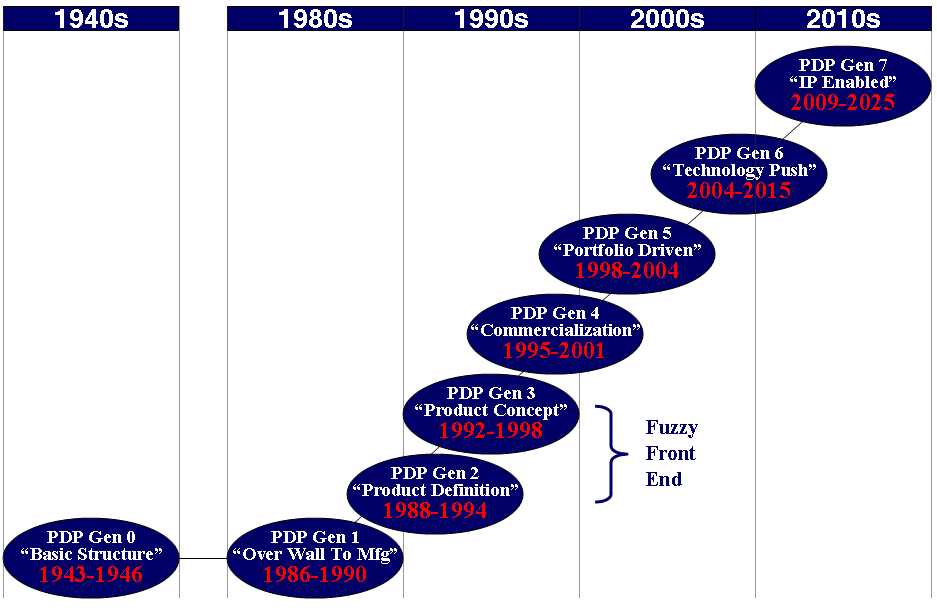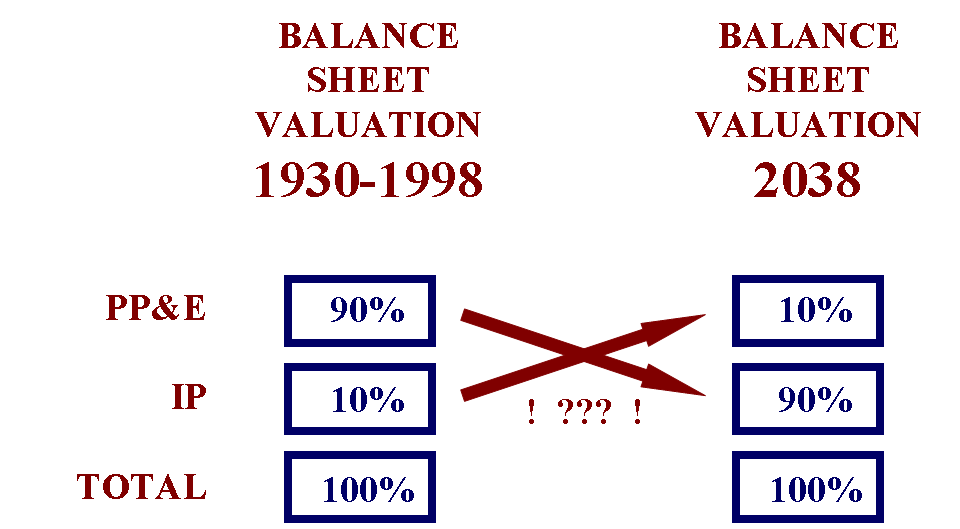Our global citizens realizing the true and ultimate importance of “Intellectual Property [IP]” is coming none too soon. “Non-Organic” Open Innovation is rapidly growing as is “Organic” Innovation; and one also begets the other after a fashion. In a couple decades, Open Innovation will become much more embedded and produce the level of financial yields that Organic currently does. The ultimate result can only be more Generation 6 Technology Push [Exhibit A], “build it and they will come.” The incubation time is still uncertain, but we will recognize its success because it will have most of the exciting aspects of the “dot com boom” of the late 1990s.
EXHIBIT A
The Seven Generations Of Concurrent R&D-Product Development-IP Practices

While all that will be wonderful, and will hopefully help restore economic health around the globe in the coming years, there is money involved at every step. Be sure that all countries and all companies and all individuals will be a lot clearer on how to strategize, identify, create, package, value, share, trade, maintain, administrate, retire, and portfolio-manage all forms and categories of intellectual property in the not too distant future.
If trends go like the explosive US bond market of the early 1980s, and there is a Mike Milliken to boot, new forms and categories and packagings of IP will emerge during this 7th Generation [Exhibit A]. Yes, some of them will be junk too. The lion’s share however will redefine the balance of value of corporations and countries in the future, not just in the financial markets but in annual corporate balance sheets and income statements [Exhibit B]. The best companies are already making provisions for this outcome.
Exhibit B
Intellectual Property Evolution Scenario For Corporations Over Five Decades

“Deliberateness with patience” will be the best approach. To get to the other side of this “IP-Enabled 7th Generation” requires that government make changes, and not just academia and industry. So far, the prior six generations [Exhibit A] of improvement in creation functions have not had to have government cooperation to get to the other side. Ultimately IP will be freely traded and exchanged as a commodity, much like wheat or soy beans or historic cars at an auction. Industry is already trading IP in open public markets and auctions. Mutual funds and ETFs based on the estimated intellectual property content in public corporations can already be bought and sold through retail brokerage firms.
From a work method viewpoint though, Intellectual Property is still a functional-sequential process in most corporations. Worse yet is that is not clear, that when compared to other common business practices and activities, if the overall internal IP process is even a rapid functional-sequential process. IP professionals are too often brought in late in product creation processes. Packages of information are too often tossed over-the-wall to the next function responsible for handling the package. IP is too often outsourced to legal entities whose domain knowledge is sometimes so limited that it relegates IP to be an administrative activity. Too often, corporate managers view IP as a pure expense. Compartmentalization and control is the result. More balanced perceptions that also view IP as a potential source of revenue and profit are necessary.
Yes, the product developers are learning more about IP. Yes, the technical capabilities of lawyers are increasing. Yes, financial professionals have increased awareness about the value of IP. However, relative knowledge and empathy is still much like the 1980s. Engineers did not know what the manufacturing people needed to know, and the manufacturing people did not know what the engineers needed to know. The empathy for IP is still too low. The touch points between product development processes and IP processes have recently started to become clearly marked on most product development and R&D process diagrams. Persons, although often physically proximal nowadays, remain largely engaged in their own process and their specific domain knowledge. There are too few integrated and concurrent practices at this time.
In the coming decade and beyond, the “IP Pipeline” will become much more congruent with the product pipeline. It will be followed by a Sales and Marketing cycle that will look and feel just like the sale of products. Likely, many Sales professionals will be responsible for representing both at any given customer account. Responsibilities will be portrayed in a common process that is inclusive of key product and IP disciplines working in a concurrent method. Business Plans will have two revenue and profit forecast sections, one for product revenues and profits and one for the IP revenues and profits. Estimates of financial returns will be calculated individually, and as a whole — in the same business plans and decision documents. It only makes sense. After all, a great percentage of both products and IP are actually derived from the same R&D spending dollars. As well, the current R&D-Product Development decision-making executives will become inclusive of IP decision-makers in an integrated and concurrent manner at every step of the inevitably congruent pipeline.
For more information on the increasing concurrency of R&D-Product Development and IP activities, please refer to an article published in Intellectual Asset Management magazine in the November-December 2009 issue, “Integral IAM and new product processes are the future.” You may contact the publisher directly for a reprint, or download a complimentary copy here.
For general information in this subject area please visit www.goldensegroupinc.com.
For educational events that further explore these practices, please visit our upcoming Innovation Summit.
![Goldense Group, Inc. [GGI] Logo](https://goldensegroupinc.com/blog/driving-product-development/wp-content/uploads/2022/03/logo-corp-darkBlue-65x65.png)
I went over this internet site and I conceive you have a lot of excellent info , saved to favorites (:.